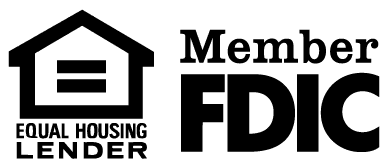Swapping a mortgage for a loan may seem complex, but understanding the steps can simplify the process. First, you’ll need to assess your current mortgage and explore new loan opportunities. Eligibility is key, so verify your credit score and financials are in check. Gather necessary documents and research lenders to find the best fit. Curious about the next steps or potential savings you could achieve? Let’s break it down further.
Understanding the Basics of Mortgage and Loan Swaps
Why consider swapping a mortgage for a loan? Understanding this process starts with grasping mortgage basics. A mortgage is a long-term commitment, usually tied to your home, with fixed or adjustable rates.
Sometimes, though, refinancing into a different loan type can offer better terms or flexibility. Loans come in various types, such as personal loans or home equity loans, which might suit your needs better if you’re looking for different repayment options or interest rates.
When you swap, you’re basically replacing your current mortgage with a loan that may have more favorable conditions. This could mean lower payments, shorter terms, or even the ability to consolidate debt.
Knowing the basics of mortgages and exploring different loan types can help you make an informed decision.
Eligibility Criteria for Swapping Mortgages for Loans in Alabama
Swapping a mortgage for a loan isn’t just about understanding different financial products; it’s also about meeting specific eligibility criteria, especially in Alabama.
You’ll need to meet certain eligibility requirements to make this swap possible. First, verify your credit score aligns with the lender’s standards. Lenders in Alabama typically expect a reasonably high score, reflecting your reliability in handling debt.
Next, evaluate your financial qualifications, including your debt-to-income ratio. This ratio helps lenders assess whether you can manage the new loan payments alongside your existing obligations.
Additionally, maintaining a stable and sufficient income is vital.
Finally, have all necessary documentation ready, like proof of income and asset statements, to streamline the process and demonstrate your financial stability.
Evaluating Current Mortgage Terms and Conditions
Before swapping your mortgage for a loan, it’s crucial to evaluate the current terms and conditions of your mortgage.
Start by conducting an interest rate comparison to see how your existing rate stacks up against current market rates. Even a slight difference can greatly impact your financial situation over time.
Next, delve into a loan term analysis. Determine how much time remains on your mortgage and consider your long-term financial goals. Are you aiming for lower monthly payments or seeking to pay off your debt faster?
Understanding your current loan’s nuances helps you make informed decisions about potential swaps.
Don’t forget to check for any prepayment penalties or fees that could affect your decision to switch from a mortgage to a loan.
Exploring Available Loan Options for Mortgage Swaps
When considering a mortgage swap, it’s essential to explore various loan options to find the best fit for your financial needs.
Start by familiarizing yourself with different loan types, such as personal loans, home equity loans, or refinancing options. Each comes with distinct terms and conditions, so understanding these can help you make an informed decision.
Pay close attention to interest rates, which can vary considerably between loan types. Lower interest rates might save you money in the long run, but be wary of any hidden fees or variable rates that could increase your expenses.
Additionally, consider the loan’s repayment terms to guarantee they align with your financial goals. With careful research, you can select a loan option that best suits your situation.
Steps to Initiate a Mortgage Swap Application
Starting on the process to initiate a mortgage swap application can seem challenging, but breaking it down into manageable steps simplifies the journey.
First, gather all necessary documents. A documentation checklist typically includes your current mortgage details, proof of income, credit report, and identification. Having these on hand streamlines the application process.
Next, research and select potential lenders who offer mortgage swaps. Contact them to understand their specific requirements and ask for their application forms.
Fill out these forms accurately, ensuring all information matches the documentation provided. Submit your completed application and await feedback from the lender.
Stay proactive by following up with the lender to address any additional requests or clarifications, ensuring a smooth shift to the next stage.
Assessing the Financial Implications of a Mortgage Swap
Understanding the financial implications of a mortgage swap is essential to make informed decisions. Begin by conducting a thorough financial assessment of your current mortgage and the prospective loan.
Compare interest rates, monthly payments, and loan terms to get a clear picture of potential savings or costs. Perform a cost analysis to identify any fees associated with the swap, such as origination fees, appraisal costs, or prepayment penalties. These can greatly impact your financial outcome.
Don’t overlook the tax implications, as they might affect your overall financial health. By examining these factors, you’ll determine if the swap aligns with your long-term financial goals.
Ultimately, a detailed financial assessment helps guarantee you’re making a choice that benefits your financial future.
Legal Considerations and Documentation Requirements
Before diving into a mortgage swap, pay close attention to legal considerations and documentation requirements. You need to guarantee all legal paperwork is accurate and complies with local regulations.
Start by consulting a legal advisor to understand your obligations and potential pitfalls. It’s vital to address compliance requirements, as failure to meet them could lead to costly penalties or nullification of the swap.
Gather all necessary documents, including your current mortgage agreement and any additional loan-related paperwork. You’ll need to provide proof of ownership, income, and property valuation.
Confirm all parties involved sign the required forms to avoid future disputes. Double-check all details for accuracy and completeness, and keep copies of everything for your records. This diligence guarantees a smooth changeover.
Finalizing the Mortgage Swap and Managing Payments
With your legal paperwork in order, you’re ready to finalize the mortgage swap and manage payments effectively.
First, review the final agreement thoroughly, confirming all terms align with your expectations. Confirm interest rates, payment schedules, and any associated fees.
Once satisfied, sign the final documents to complete the swap.
Effective payment management is essential to avoid any missed payments or penalties. Set up automatic payments if possible to streamline the process.
Keep track of your payment schedule and maintain records for future reference. Regularly review your financial situation and adjust your budget if necessary to accommodate the new loan terms.
Stay proactive, communicate with your lender, and address any issues promptly to guarantee a smooth changeover and successful payment management.
Frequently Asked Questions
Can I Swap My Mortgage for a Personal Loan?
You can’t directly swap your mortgage for a personal loan, but exploring mortgage alternatives is possible.
Consider different loan options, like a home equity loan or a refinance, which might offer better terms.
Personal loans typically have higher interest rates and shorter repayment periods than mortgages, so think carefully about your financial goals.
Consult with a financial advisor to understand the best path for your situation and future plans.
How Does a Mortgage Swap Affect My Credit Score?
When you swap a mortgage for another loan, you’re likely to see some credit impact.
Your credit score changes depend on how the new loan affects your credit utilization and payment history. Closing the mortgage might reduce your credit mix, potentially lowering your score.
However, consistently paying the new loan on time can help mitigate negative effects.
Always monitor your credit report to understand how these changes affect your score.
Are There Tax Implications When Swapping a Mortgage for a Loan?
When you swap a mortgage for a loan, you might encounter tax implications.
You can’t claim tax deductions on loan interest like you can with mortgage interest. This change can affect your overall tax liability, potentially increasing it.
It’s essential to review any shifts in your financial obligations to guarantee you’re not surprised come tax season.
Consulting a tax advisor can help you navigate these changes effectively and optimize your strategy.
What Are the Common Reasons Homeowners Swap Mortgages for Loans?
You’re probably considering swapping your mortgage for a loan because you want better refinancing options or need debt consolidation.
Homeowners often make this choice to secure lower interest rates, reduce monthly payments, or consolidate multiple debts into a single payment.
By doing so, you can manage your finances more effectively and potentially save money in the long run.
It’s important to weigh the benefits against any potential costs involved in the process.
Can I Swap My Mortgage for a Loan With a Different Lender?
Yes, you can swap your mortgage for a loan with a different lender.
When considering mortgage portability, you’ve got lender options to explore.
It’s crucial to compare interest rates, terms, and fees from various lenders to find the best fit for your financial situation.
Contact potential lenders to understand their requirements and see if they offer better terms than your current one.
Always read the fine print before making a decision.
Conclusion
In summary, swapping your mortgage for a loan can be a strategic move to improve your financial situation. Start by evaluating your current mortgage terms and exploring potential loan options. Make sure you meet the eligibility criteria and gather the necessary documents. Carefully review any loan offers and understand the financial implications before signing. Once finalized, manage your new payments diligently to maintain financial stability. With careful planning and execution, you can successfully navigate this process.




